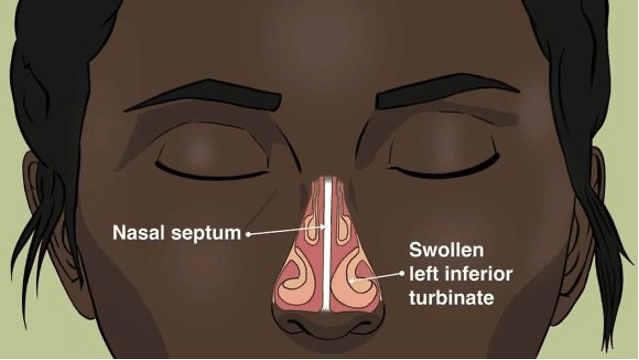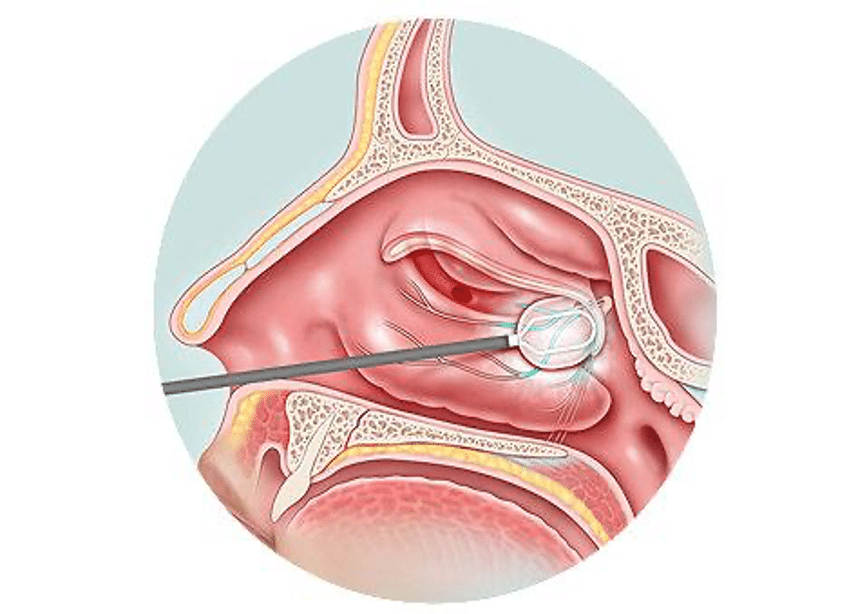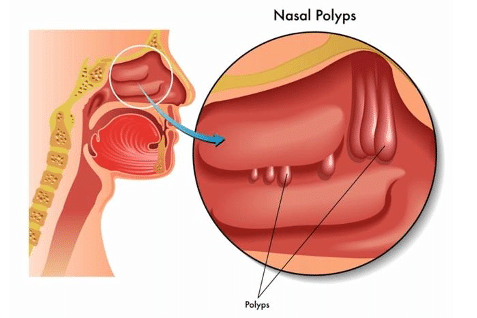By Dr Annabelle Leong
Did you know that mouth-breathing is abnormal? You should be breathing through your nose most of the time and not through your mouth. Mouth-breathing is quite common in children and adults but it isn’t normal. Some people may not even realise that they are breathing through their mouth all the time but they often wake up with a dry mouth in the morning. Quite often, they also suffer from a persistently blocked nose and difficulty breathing! This abnormal way of breathing may lead to waking up repeatedly during the night (nocturnal waking), in turn causing disrupted poor sleep quality.
If your nasal passages are blocked with mucus and swollen soft tissue, then you have not choice but to breathe through your mouth. Stuffy blocked nose symptoms are due to ENT conditions such as:
- Deviated nasal septum
- Enlarged inferior turbinates
- Nasal allergies (allergic rhinitis)
- Sinus infections
- Nasal polyps
- Rare nasal tumours
Let’s go through each of these ENT health issues one by one:
Contents
1. Deviated nasal septum
This is a structural problem with the midline cartilage and bony plate of the nose, that separates left and right nasal passages. Many people have a crooked septum or deviated septum, making one or both nasal passages narrow, hence limiting the airflow entry. Deviated septum problems don’t improve with the use of nasal sprays and decongestant medications.
Only surgery can fix the deviated nasal septum problem to help you breathe better. This is called a Septoplasty procedure which is often performed together with turbinate surgery (turbinoplasties) to widen your nasal passages. We usually don’t perform septoplasties in young children because their nose anatomy is still growing. So we prefer to wait till at least their mid-late teens or when they have stopped growing taller, a nice indication to help us consider the right time for your septoplasty.

Although septoplasty may be undertaken by itself as a day surgery, many patients may need to stay overnight if they also have turbinate surgery done. This is because they usually have temporary nasal packing overnight to prevent bleeding, a low risk of about 2% overall.
2. Enlarged inferior turbinates
The turbinates are what I call the “sausages of the nose”. They are normal structures which sometimes, perhaps due to allergy reactions, can swell up to cause a persistent blocked nose with difficulty breathing.
A trial of nasal medications like nasal steroids and antihistamine tablets is usually prescribed. But if your breathing fails to improve, then you might benefit from having turbinate surgery to trim the enlarged turbinates to help you to breathe better through your nose.
If you choose a simple radiofrequency ablation of your turbinates, it works fine but be aware that there is a recurrence rate, meaning those turbinates may swell up yet again after a few months.
The more longlasting turbinate surgery method is a turbinoplasty where the internal bone structure is actually removed and the swollen soft tissue is shaved or trimmed. So in future, with this permanent change in turbinate structure, those “sausages” of yours won’t be able to swell up to the same severity as before, even with your worst allergy flareup.

3. Allergic rhinitis (Nasal allergies)
Many people suffer from allergic rhinitis and even more are not even aware of this. They wrongly assume their blocked runny nose symptoms are due to their sinuses having “morning sinus”. But this isn’t about sinus infection or sinusitis. It is about a hypersensitivity reaction of their nose, reacting to allergens such as dust, house dust mite, pollen, temperature and humidity changes.
We try a course of nasal medications again like nasal steroids and antihistamine tablets. These medications are quite effective but if the symptoms of blocked runny nose and backdrip keep flaring up, then it’s time to consider allergy testing to find out why. Surgery in the form of septoplasty and turbinoplasties can help to breathe better and dry the nasal secretions up but the underlying hypersensivity of the nose may still continue.
Clarifix is a safe easy method to reduce the nasal mucus by freezing the mucus-producing nerve endings of the nose. It can be quite effective in allergic rhinitis patients but it doesn’t really help nasal congestion. So usually, if we are going to perform Clarifix, we tend to do it together with septoplasty and turbinoplasty surgery at the same time.

4. Sinus infections
Sinusitis occurs when the linings of the nasal sinuses become inflamed due to bacterial infection. This may occur after you have just had the flu or a bad cold i.e. it starts off as a viral infection at first but then bacteria start to grow in your sinuses to then result in an acute sinus infection.
Persistent cough symptoms can be caused by a heavy postnasal drip or backdrip from the nose. So it is important to treat the cause which is the sinus infection, NOT keep treating it as “asthma” or “bronchitis”. Using a saline solution to rinse out your nose repeatedly, followed by a nasal steroid spray and decongestant medications can help a sinus infection get better wonderfully!
5. Nasal polyps
Sometimes, when your blocked nose and difficulty breathing doesn’t get better with the usual antibiotics and nasal sprays, then it’s time to have your nose checked out with an endoscope or camera. Just in case it’s all due to a bad case of nasal polyps! Nasal polyps are growths inside your nose, usually benign, which are thought to be caused by underlying allergic rhinitis or nasal allergies. Then they grow looking like a bunch of yellowish grapes to block your nasal passages and sinuses. This may then lead to sinus infections, cough, backdrip and nasal congestion.
Oral steroids can help to reduce the size of nasal polyps to help you breathe better but nasal polyps may recur once the steroids are stopped. Surgery plays a role to open up the blocked sinuses and help you breathe more clearly. The current treatment plan may also include giving some immunotherapy medication such as Dupixent to shrink the nasal polyps completely.

6. Rare nasal tumours
We ‘ll try out best not to scare you in this section but sometimes, nasal tumours may appear inside your nose to block the airway off. These may range from the benign ones like inverted papillomas to the malignant tumours such as sinonasal cancer. Early detection is critical so please seek the help of your friendly ENT specialist in Singapore if you’re worried.

